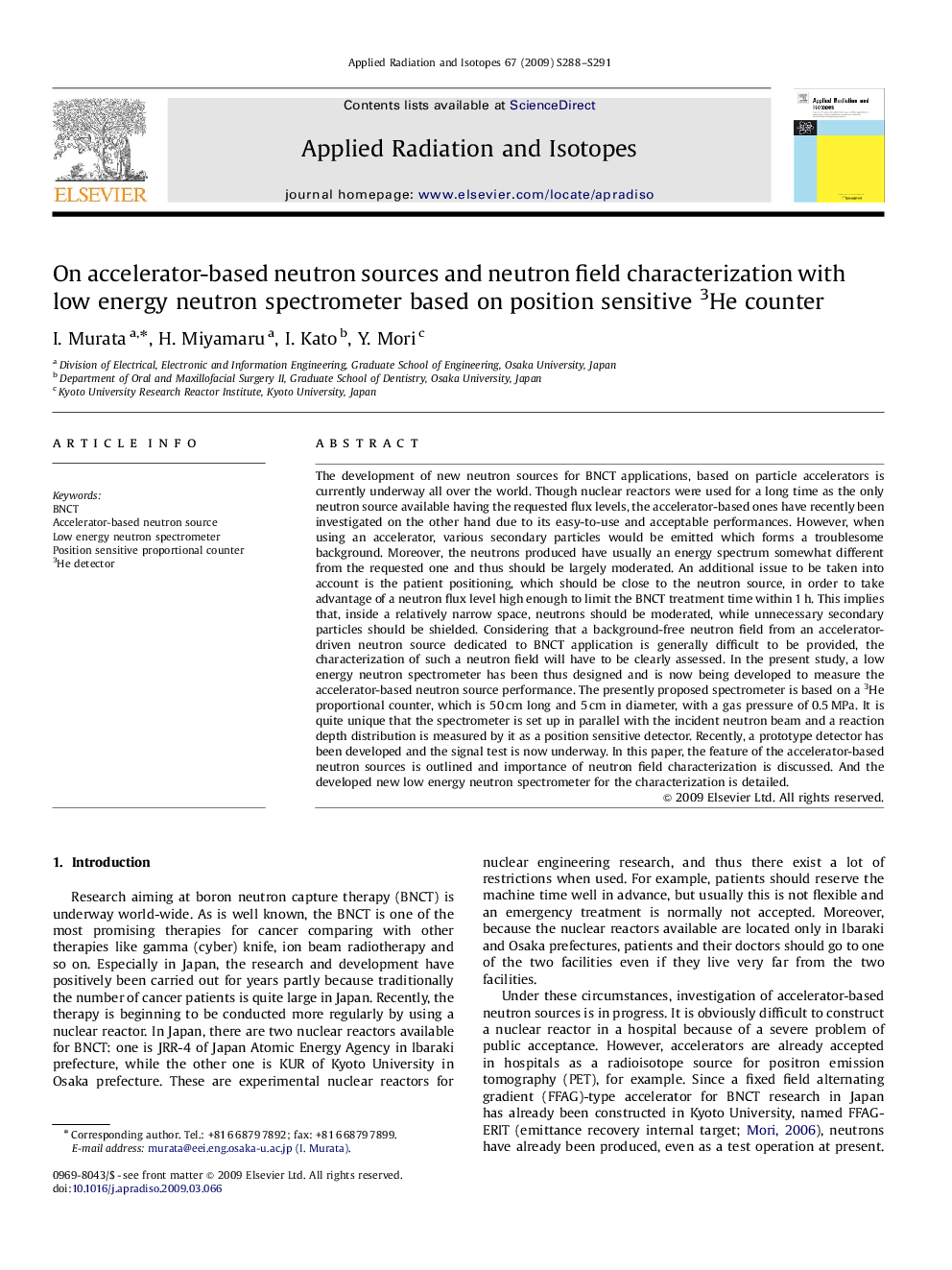| Article ID | Journal | Published Year | Pages | File Type |
|---|---|---|---|---|
| 1876947 | Applied Radiation and Isotopes | 2009 | 4 Pages |
The development of new neutron sources for BNCT applications, based on particle accelerators is currently underway all over the world. Though nuclear reactors were used for a long time as the only neutron source available having the requested flux levels, the accelerator-based ones have recently been investigated on the other hand due to its easy-to-use and acceptable performances. However, when using an accelerator, various secondary particles would be emitted which forms a troublesome background. Moreover, the neutrons produced have usually an energy spectrum somewhat different from the requested one and thus should be largely moderated. An additional issue to be taken into account is the patient positioning, which should be close to the neutron source, in order to take advantage of a neutron flux level high enough to limit the BNCT treatment time within 1 h. This implies that, inside a relatively narrow space, neutrons should be moderated, while unnecessary secondary particles should be shielded. Considering that a background-free neutron field from an accelerator-driven neutron source dedicated to BNCT application is generally difficult to be provided, the characterization of such a neutron field will have to be clearly assessed. In the present study, a low energy neutron spectrometer has been thus designed and is now being developed to measure the accelerator-based neutron source performance. The presently proposed spectrometer is based on a 3He proportional counter, which is 50 cm long and 5 cm in diameter, with a gas pressure of 0.5 MPa. It is quite unique that the spectrometer is set up in parallel with the incident neutron beam and a reaction depth distribution is measured by it as a position sensitive detector. Recently, a prototype detector has been developed and the signal test is now underway. In this paper, the feature of the accelerator-based neutron sources is outlined and importance of neutron field characterization is discussed. And the developed new low energy neutron spectrometer for the characterization is detailed.
